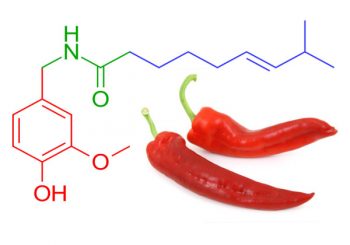Contributing writer for Wake Up World
Chili peppers (capsicum annuum) are one of the most common yet important spices in cooking, and is enjoyed by countless people all over the world. While most people believe that they originated from India, China or Thailand — countries that make extensive use of chilies in their cuisine — did you know that they actually originated from the Americas?1
The history of chili peppers goes back to more than 6,500 years ago in the Mexican region.2 Ancient Mexicans extensively used them to spice up their food, and in 1492, it was introduced to the Europeans when Christopher Columbus unexpectedly ended up in America.3
[pro_ad_display_adzone id=”110028″]
Originally, Columbus wasn’t looking for chili peppers — he was simply looking for another route to Asia to acquire black peppercorns, which were considered luxury items in Europe back then. After he returned with plant samples to the Iberian Peninsula, Portuguese traders brought them around the world for bartering, eventually ending up in Asia and becoming even more widespread.4
What makes chili peppers unique is capsaicin, the ingredient that gives them their spicy flavor, as well as their unique health benefits. It was first isolated in 1846 by a British Chemist named John Clough Thresh,5 but it was only in 1979 that capsaicin was tested in a scientific environment for therapeutic uses.
Tony Yaksh, a researcher at the Mayo Clinic, discovered that repeated topical applications of capsaicin depleted substance P (a signaling molecule), which helped ease irritation and inflammation. Since this discovery, capsaicin has become more prevalent.6
Chili Peppers Are the Best Natural Sources of Capsaicin
If you’re looking to add capsaicin to your diet, chili peppers are your best source. The only exception to this food group is the bell pepper, which has no capsaicin.7 To gain the health benefits of this compound, you need to buy real chili peppers that will give your food that distinctive spicy flavor.
The spiciness of chili peppers is measured using the Scoville Scale, developed by pharmacist William Scoville in 1912. To measure the pepper, it needs to be diluted repeatedly until the strength is not detectable anymore by the human tongue. For example, a jalapeño has a Scoville Heat Unit (SHU) of 8,000, which means it was diluted 8,000 times.8 The table below shows the SHU of the most commonly used peppers in cooking:9
| Pepper | Scoville Heat Units | Description |
| Cherry |
500 |
Typically measures 4 inches long and 4 inches wide, with a shape that resembles a heart. The heat is very mild. |
| Anaheim |
1,000 to 5,000 |
Maroon in color and has a long, skinny body. The flavor is only slightly hotter than the cherry variety. |
| Jalapeño |
2,000 to 8,000 |
This pepper is usually red or green, with a length of 2 to 3 inches. Many people agree that it gives off the right amount of spiciness, leading to its popularity. |
| Serrano |
10,000 to 25,000 |
The appearance is similar to the jalapeño, but with a hotter taste. |
| Cayenne |
25,000 to 50,000 |
This pepper is popular for spicy food lovers because it adds a noticeable amount of heat. |
| Tabasco |
30,000 to 60,000 |
This special type of pepper is used to produce the popular Tabasco hot sauce. A single pepper usually measures 2 inches long, and can come in green, red, yellow or orange. |
| Thai |
50,000 to 100,000 |
Typically measuring less than an inch per pepper, Thai peppers pack serious heat. It’s mainly added to spicy Thai dishes. |
| Rocoto |
100,000 to 250,000 |
The rocoto pepper has a large size similar to the bell pepper, but is rounder and only comes in red or green. It’s usually used to make special hot sauces. |
| Habanero |
150,000 to 350,000 |
The habanero is well-known for being one of the spiciest peppers. It can come in various colors, and measures only 3 centimeters in length. |
| Ghost |
1,000,000 |
Recognized as one of the hottest peppers in the market, a single seed from a ghost pepper can leave your mouth scorching for up to 30 minutes. |
The great thing about chili peppers is their versatility. Depending on the variety you choose, they can be mixed in recipes or added to dips, marinades and salsa to give them the right amount of heat.10 Chili peppers can be part of a nutritious diet, but there are some side effects to be aware of, most prominently the heat they cause once eaten. You may also experience any of the following:11
• Stomach irritation — Gastritis or heartburn may occur because chili peppers can inflame your stomach lining.
• Respiratory problems — When consumed incorrectly (such as accidentally inhaling chili powder), your nose and mouth can experience discomfort and redness.
• Allergies — Chili peppers can cause various allergic reactions such as itchiness, a runny nose, watery eyes and other signs of irritation.
Adding chili peppers into your diet is the best way to get capsaicin regularly into your system — you may even enjoy the heat as you gradually get used to it. Meanwhile, capsaicin supplements that come in various dosages are also sold in the market.
Studies Regarding the Potential Health Benefits of Capsaicin
Capsaicin, the source of peppers’ spiciness, has been studied comprehensively, and you may be surprised at what it can do. The following are prominent examples:
• Pain Relief — As mentioned previously, capsaicin may help relieve pain by exhausting your body’s supply of substance P, a chemical found in your nerve cells that plays a role in transmitting pain signals to your brain. In one study, heartburn sufferers were given 2.5 grams of red chili peppers per day. They noted that at the beginning of the treatment, pain slightly worsened, but gradually improved over time.12
• Weight Management — Spicy foods, quite literally, can help burn fat and help you lose weight. In a study published in the Journal of Nutritional Science and Vitaminology, participants were given 10 grams of red pepper during a meal.
After eating, the researchers monitored the participants’ energy expenditure and learned that chili peppers increased it after consumption.13 It is believed that your body can burn an extra 50 calories per day if you consume capsaicin regularly.14
• Reduce Hunger — Several studies have shown that capsaicin may help reduce hunger, helping prevent overeating and excess weight gain.15,16,17,18 According to a study published in the European Journal of Nutrition, capsaicin works by reducing the production of ghrelin, the hormone responsible for triggering hunger.19
• Blood Pressure Maintenance — Capsaicin may help promote long-term heart health. According to one study, mice affected with high blood pressure experienced relief after they consumed food mixed with capsaicin. The researchers went on to suggest that capsaicin activates the transient receptor potential vanilloid 1 (TRPV1), which contributes to vasorelaxation and lowered blood pressure.20
• Boost Digestive Health — Aside from reducing hunger, capsaicin may help promote a well-functioning digestive tract. One study found that it enhanced the buffering component of gastric secretory responses and gastric emptying, as well as prevention of gastric mucosal damage from ethanol-based beverages.21
Another study suggested that capsaicin can help promote the healing of gastric ulcers by inhibiting acid secretion, as well as stimulating alkali and mucus production and gastric blood flow.22
• May Lower the Risk of Cancer — Capsaicin may have the ability to fight against cancer by attacking pathways in the growth of cancer cells. In a related study, capsaicin has been shown to induce apoptosis in prostate23 and in another study, breast cancer cells were tested.24
Other Uses of Capsaicin
Aside from being added to foods or taken as a supplement, capsaicin can be found in skincare products due to its anti-inflammatory properties. It’s also used to help with:25
• Post-surgery pain at the site of operation
• Nervous system problems such as trigeminal neuralgia
• Cluster headaches
• Joint pain from osteoarthritis and rheumatoid arthritis
When using a capsaicin cream, however, always exercise caution. You may feel a slight burning feeling on your first application, but it will become better upon frequent use. Wash your hands thoroughly afterward to prevent getting the product into your eyes and other parts that have mucous membranes, as it can cause a burning sensation.26
Capsaicin is also used in matters of personal safety, with the most popular derivative being pepper spray. It allows potential victims to protect themselves by incapacitating assailants or dangerous animals. To make the spray, the capsaicin is extracted from a solvent such as ethanol, which is then evaporated, emulsified and pressurized before it is placed into canisters.27
Side Effects of Capsaicin Supplements
In general, capsaicin supplements do not cause any alarming side effects, but you may still experience uncomfortable indicators similar to eating chili peppers. According to WebMD, possible complications include stomach irritation, sweating, flushing and a runny nose. When taken in large amounts, it may cause liver or kidney damage.28
Be forewarned that your stomach may experience a low, small heat that can last anywhere from 30 minutes to an hour after taking a capsaicin capsule. This means that the capsaicin, which is naturally hot, is being released into your digestive system.29
Capsaicin and Chili Peppers Can Be Enjoyed by Nearly Everyone
Capsaicin supplements (and hot peppers) are generally not recommended for very young children, because they do not have well-developed digestive systems yet. As a general rule, do not give capsaicin to children under 2 years old.30 Once your child has grown big enough, you may introduce hot peppers into their diet to obtain the benefits of capsaicin, but do it gradually. You can mix a dash of chili pepper into their food to help them become accustomed to the taste.
Remember to use very mild peppers first, then slowly move up to other peppers if they like the flavor. Also, avoid mixing in the seeds, as they contain the highest concentrations of capsaicin.31
Frequently Asked Questions About Capsaicin
Q: What is pure capsaicin?
A: Capsaicin, in its purest form, is the chemical that gives chili peppers their spicy flavor and potential health benefits.
Q: What does capsaicin do for your body?
A: According to research, capsaicin has various potential benefits for your health, such as weight management, reduced risk of tumors, pain relief and lowered LDL cholesterol levels.
Q: What are the potential side effects of capsaicin?
A: One of the most notable side effects of taking capsaicin is the generation of heat, which you may find uncomfortable. You may also develop coughs, sore throat, runny nose and shortness of breath. When using a capsaicin skin cream, burning, itching, dryness and swelling may occur at the site of application.32
References:
- 1 Time, “Chili Peppers: Global Warming” June 14, 2007
- 2 Sci-News.com, “Scientists Trace Origins of Domesticated Chili Pepper to Central-East Mexico” April 22, 2014
- 3, 4 Legal Nomads, “A Brief History of Chili Peppers” December 10, 2015
- 5 Tasty: The art And Science of What We Eat, Page 176
- 6 Best Health, “A Surprising Way to Reduce Arthritis Pain
- 7 The Spruce, “Why Aren’t Bell Peppers Spicy?” January 20, 2017
- 8 Independent, “Wilbur Scoville: What Is the Scoville Scale – And What Is the Hottest Chili in the World” January 22, 2016
- 9 She Knows, “This Guide to Hot Peppers Will Keep You From Burning Your Tongue Off”
- 10 Chili Pepper Madness, “Chili Pepper Recipes”
- 11 NatureWord.com, “7 Side Effects of Hot Chili Peppers” May 31, 2017
- 12 The New England Journal of Medicine, 2002 Mar;346(12):947-8
- 13 Journal of Nutritional Science and Vitaminology, 1995 Dec;41(6):647-56
- 14 Appetite, 2012 Oct;59(2):341-8
- 15 The British Journal of Nutrition, 1999 Aug:82(2):115-23
- 16 International Journal of Obesity, 2016 Aug;40(8);1198-204
- 17 Clinical Nutrition, 2009 June;28(3):260-5
- 18 Chemical Senses, 2012 Feb;37(2):103-21
- 19 European Journal of Nutrition, 2009 June;48(4):229-234
- 20 Cell Metabolism, 2010 Aug 4;12(2):130-141
- 21 Progress in Drug Research, 2014:68-209-58
- 22 Critical Reviews in Food Science and Nutrition, 2006;46(4):275-328
- 23 Future Oncology, 2010 Oct;6(10):1545-50
- 24 Ruhr-Universität Bochum, “Spicy Molecule Inhibits Growth of Breast Cancer Cells” December 20, 2016
- 25, 26 WebMD, “Capsaicin — Topic Overview”
- 27 U.S. Pharmacist, “Capsaicin: Risks and Benefits” July 20, 2009
- 28 WebMD, “Capsicum”
- 29 PepperScale, “What It Like Taking Cayenne Pepper Pills?”
- 30, 31 Our Everyday Life, “Are Hot Peppers a Danger to Kids?”
- 32 Mayo Clinic, “Capsaicin — Topical”
Originally published at mercola.com and reproduced here with permission.
Recommended articles by Dr. Joseph Mercola:
- High Blood Pressure Linked to Increased Risk of Dementia
- Cholesterol Does Not Cause Heart Disease
- CBD Has Unique Ability to Cross Blood-Brain Barrier
- Water and Homeopathy: Latest Discoveries at Science’s Cutting Edge
- Sugar Substitutes: What’s Safe and What’s Not
- Unveiling the Depths of the Human Psyche: Psychedelics May Unlock Parts of the Mind That Are Normally Inaccessible
- What Should Your Poop Look Like?
- The Endocannabinoid System and the Important Role it Plays in Human Health
- Magic Mushrooms May Hold Key to Long-Term Relief from Anxiety and Depression
- Scientific Links Between Processed Foods and Depression
About the author:
Born and raised in the inner city of Chicago, IL, Dr. Joseph Mercola is an osteopathic physician trained in both traditional and natural medicine. Board-certified in family medicine, Dr. Mercola served as the chairman of the family medicine department at St. Alexius Medical Center for five years, and in 2012 was granted fellowship status by the American College of Nutrition (ACN).
While in practice in the late 80s, Dr. Mercola realized the drugs he was prescribing to chronically ill patients were not working. By the early 90s, he began exploring the world of natural medicine, and soon changed the way he practiced medicine.
In 1997 Dr. Mercola founded Mercola.com, which is now routinely among the top 10 health sites on the internet. His passion is to transform the traditional medical paradigm in the United States. “The existing medical establishment is responsible for killing and permanently injuring millions of Americans… You want practical health solutions without the hype, and that’s what I offer.”
Visit Mercola.com for more information, or read Dr. Mercola’s full bio and resumé here.
[pro_ad_display_adzone id=”110027″]








